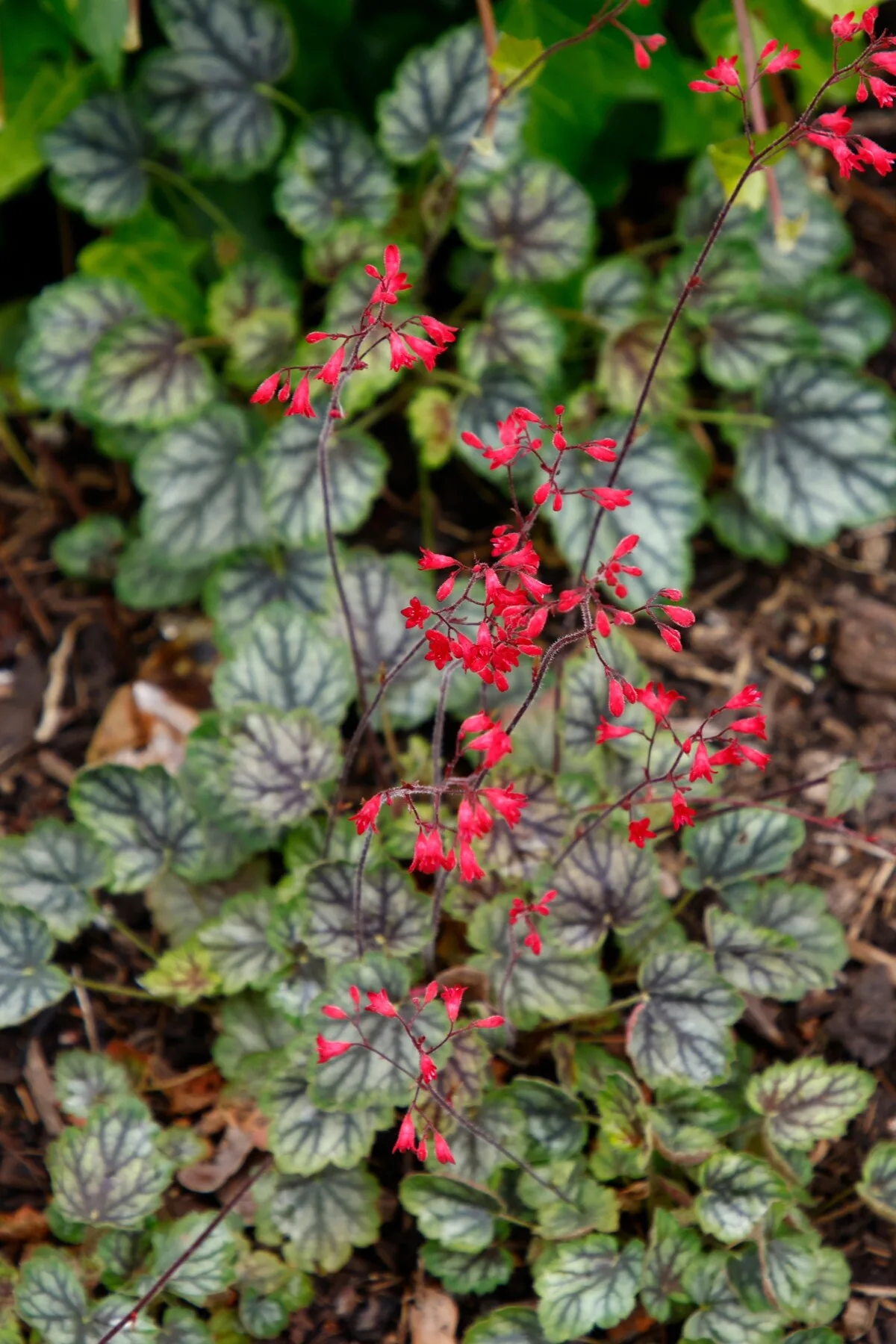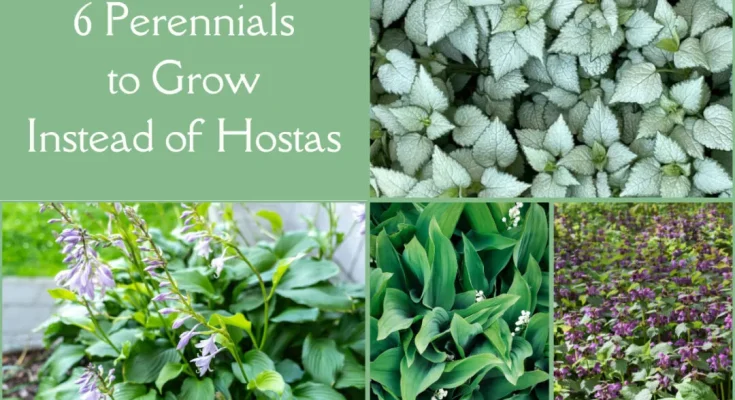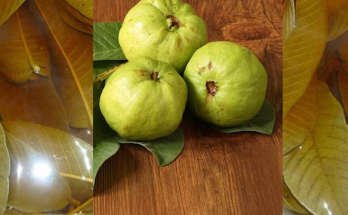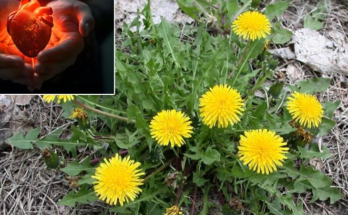Hostas are great. Everyone loves hostas. You’ve probably got a few yourself.
Hostas have a lot going for them. They’re ridiculously easy to care for (basically ignore them). You can eat their crispy, tender shoots every spring. And they are one of few plants that do quite well in shady areas.

It’s no wonder that every spring, nurseries and garden centers everywhere are loaded with hostas.
The same hostas that are there every year.
The same hostas your neighbors and grandmother have.
The same hostas that the stupid deer keep feasting on every spring.
If you’re a little tired of the commonplace hosta. If you’re looking for something different from the usual “do you want green, dark green, dark green with light green, green with white or this green that’s sort of bluish but still green” hostas, then I’ve got good news.
Here are six just-as-easy-to-care-for, shade-loving, deer-resistant alternatives. If you’re ready to change it up a bit, or you want to add a little something different among your hostas, keep reading.
1. Bleeding Heart (Dicentra spectabilis)

These classic perennials are most well-known for the heart-shaped flowers that fall in a line down a long arching stem. They look like rows of beautiful lockets among feather gray-green foliage. The blooms are instantly recognizable in fuchsia or pristine white. Dicentra is a spring-blooming plant that is perfectly charming in shade gardens.
Planting: Plant in rich, moist, well-drained soil in partial shade. Space plants about 12-18 inches apart.

Basic Care Needs:
- Water: Keep soil consistently moist, especially during hot weather.
- Soil: Rich, well-drained soil.
- Sun: Partial shade.
- Fertilizer: Apply a balanced, slow-release fertilizer in early spring.
- Hardiness Zone: Zones 3-9
- Deer-Resistant: Yes
- When to Divide: Every 3-4 years, in early spring or fall.
2. Ferns (Polypodiopsida)

There’s something timeless and majestic about ferns. Along with adding structural interest with their tall, bushy growth and feathery foliage, ferns are another popular perennial you can eat. (Of course, that’s only if you grow the right variety and only in the spring. You can learn more about eating fiddleheads here.)
Ferns are an excellent filler in areas where you want something non-flowering, and they’re an excellent addition to cottage gardens and even cut flower gardens.
Planting Instructions: Choose a location with moist, well-drained soil in shade to partial shade. Plant at the same depth as the root ball.

Basic Care Needs:
- Water: Keep soil consistently moist.
- Soil: Moist, well-drained soil.
- Sun: Shade to partial shade.
- Fertilizer: Use a balanced, slow-release fertilizer in early spring.
- Hardiness Zone: Varies by species, generally Zones 3-9.
- Deer-Resistant: Yes.
- When to Divide: Every 3-5 years, in early spring.
3. Dead Nettles (Lamium)

Lamium, or dead nettles, are a wonderful option if you’re looking to cover more ground than hostas do. They’re an easy perennial ground cover with striking variegated leaves in shimmery white or silver. Depending on the variety, they produce short stalks of white, pink, purple or yellow flowers.
Lamium is a quick-growing perennial, and some varieties are considered invasive in certain areas. Check with your local ag extension office to find out if any of the cultivated varieties are invasive in your area.
Planting Instructions: Plant in partial to full shade in well-drained soil. Space plants about 12 inches apart.

Basic Care Needs:
- Water: Keep soil consistently moist but not waterlogged.
- Soil: Well-drained soil.
- Sun: Partial to full shade.
- Fertilizer: Apply a balanced fertilizer in spring.
- Hardiness Zone: Zones 3-8.
- Deer-Resistant: Yes.
- When to Divide: Every 3-4 years, in spring.
4. Coral Bells (Heuchera)

If you love the foliage of hostas but want something a bit more, well, more, then consider coral bells. They have the same bushy growth habit but with large, colorful leaves in shades of deep burgundy, silver and even, yes, green. What’s more, in early summer, they produce the most impossibly delicate stalks of tiny little bell-shaped flowers. Despite their size, these tiny flowers can attract hummingbirds.
Planting Instructions: Plant in well-draining soil with partial shade to full sun. Space plants about 12-18 inches apart.

Basic Care Needs
- Water: Keep soil consistently moist, especially in hot weather.
- Soil: Well-draining soil.
- Sun: Partial shade to full sun.
- Fertilizer: Apply a balanced, slow-release fertilizer in spring.
- Hardiness Zone: Zones 4-9.
- Deer-Resistant: Yes.
- When to Divide: Every 3-4 years, in spring or fall.
5. Solomon’s Seal (Polygonatum)

Solomon’s seal is a great perennial for those looking for three-season color and interest. One of the first plants to emerge in the spring, they have beautiful foliage growing alternately on long, graceful stems. Then come the rows of cream-colored or yellowish-green flowers in the shape of bells. In late summer, the plant grows dark blue-purple berries, and finally, in the fall, the leaves turn a lovely gold.
This slow-spreading plant is wonderful for filling in areas of your yard that are a bit shady where other plants won’t grow, like beneath trees. You can read more about how to grow them here.
Planting Instructions: Plant in moist, well-drained soil in partial to full shade. Space plants about 12-18 inches apart.

Basic Care Needs:
- Water: Keep soil consistently moist.
- Soil: Moist, well-drained soil.
- Sun: Partial to full shade.
- Fertilizer: Apply a balanced, slow-release fertilizer in spring.
- Hardiness Zone: Zones 3-9.
- Deer-Resistant: Yes.
- When to Divide: Every 3-4 years, in spring or fall.
6. Lily of the Valley (Convallaria majalis)

Okay, I’ve saved the best for last. I might be biased, though. The Lily of the valley is my favorite flower. They look like something out of a fairytale with their tiny cream-colored bells hiding among glossy emerald leaves. And their scent is unmistakable – clean and fresh, like spring rain.
Lily of the valley is an excellent choice for shady, sparse areas as they fill in quickly once they’re established. The effect is a beautiful carpet of deep green.
Planting Instructions: Plant rhizomes in rich, well-drained soil with partial to full shade. Space plants about 6-12 inches apart.

Basic Care Needs:
- Water: Keep soil consistently moist but not waterlogged.
- Soil: Rich, well-drained soil.
- Sun: Partial to full shade.
- Fertilizer: Apply a balanced fertilizer in early spring.
- Hardiness Zone: Zones 3-8.
- Deer-Resistant: Yes.
- When to Divide: Every 2-3 years, in spring or fall.
Hostas are a tried and true favorite for a reason. But sometimes, you just want to change things up a bit. Or maybe you’re just tired of fighting with Bambi (I’ve got a few tricks up my sleeves to deal with him.). Whatever the reason, you’ve got options beyond hostas.



